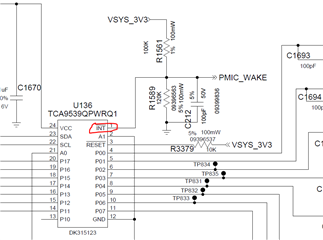Dear team,
We don't plan to use RESET pin, so we connect this pin to VSYS_3V3 with a pullup resistor. But we found that INT pin is always low when RESET connect to VSYS.
in addition, VCC connects to VSYS_3V3, and this power is always high after power on, which means we don't perform power on reset operation. Is the power-on-reset necessary?

Thanks & Best Regards,
Sherry

